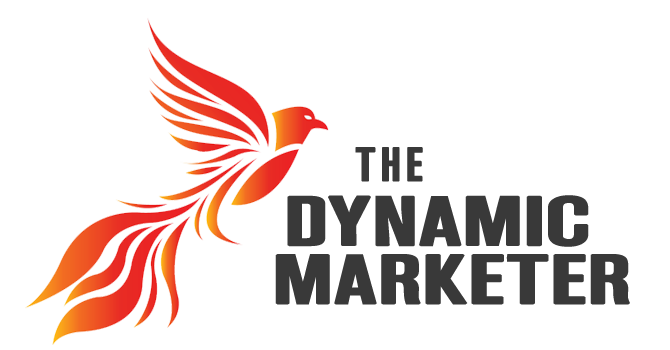The main difference between digital and traditional marketing is the medium through which an audience encounters a marketing message. While traditional marketing uses traditional media like magazines and newspapers, digital marketing uses digital media, such as social media or websites.
Of course traditional marketing doesn’t mean it’s old fashioned. Traditional marketing still plays an important role in people’s lives with the ever growing need to step out of the digital world.
In the same token, digital marketing is just as important as traditional if not even more so. Digital marketing uses every touch point of your daily use of the internet to reach you.
If you are google searching holiday ideas for your next weekend getaway, the chances are that soon after you will see a tailored sponsored ad from Sky Scanner.
Using the internet for several hours each day is a normal part of most people’s day to day life. Digital marketing just uses this to its advantage by cleverly weaving in marketing communications into every digital channel.
What is traditional marketing?
The significant difference between digital and traditional marketing is how an audience encounters the marketing message. And traditional marketing utilizes conventional media that includes magazines and newspapers, print, broadcast, telemarketing, or direct mail to engage the audience and broaden the reach.
What are the types of traditional media?
Traditional media generally includes all the non-digital advertising and marketing methods.
Traditional media is:
- Cold calling
- Door-to-door sales
- Banner ads
- Television advertisements
- Radio advertising
- Print advertising
- Direct mail advertisements
- Billboards and off-site signs
Advantages of digital marketing
Global reach
With digital marketing, any brand could reach new markets and trade globally; and track and measure the results. As of January 2021, there were 4.66 billion active internet users worldwide – 59.5 percent of the global population.
Of this total, 92.6 percent (4.32 billion) accessed the internet via mobile devices. With this tremendous reach, the wisest decision anybody could make is to invest in internet marketing channels.
Digital Marketing techniques
Digital marketing techniques are very different than traditional marketing fundamentals. What works in media like tv, radio, and print won’t always work online and vice versa. To be effective at digital marketing, you need to leverage the technologies that fuel online media like websites, clickable ads, and social media profiles.
These include:
- Search engines
- Content management systems like WordPress, Joomla!, and Magento
- Online ad platforms like Google Ads and Facebook Ads
- Social media platforms like Facebook, Twitter, and LinkedIn
Digital marketing vs. traditional marketing: what’s the difference?
The main difference between digital and traditional marketing is the medium through which an audience encounters a marketing message. While traditional marketing uses traditional media like magazines and newspapers, digital marketing uses digital media, such as social media or websites.
Traditional marketing is static, whereas digital marketing is dynamic.
In digital marketing, you could specify the exact audience to who you want to show the ad. At the same time, you get to schedule small budgets for testing and have enough resources for A/B testing. You may also change the ad copy, budget, audience, etc., even when the ad is live. In contrast, you have no control over your target audience in a traditional marketing strategy.
The internet advertising industry is going crazy with such an immense shift of customer attention towards digital media.
Traditional Marketing is a one-way communication channel as people cannot send messages to the brand. In contrast, digital marketing allows people to send messages to the brand through comments on the advertisement, direct statements or responding to the chatbots.
Targeting an audience is standardized in traditional marketing, whereas it could be customized in the case of digital marketing.
Traditional marketing are costlier, and it is difficult to measure the results as there is no guarantee who would your ad reach. For example, a print ad could cost between $2000-$16,000, but specifying the people is impossible. However, you could run various versions of ads in digital marketing and test it on your customer persona to find the exact audience and ad copy that could bring the maximum return on investment.
Many local businesses still rely on traditional marketing for business operations and lead generations. However, the increase in popularity of digital marketing and a complete track on return on investment makes digital marketing a better option.
You could re-target your audience if they interacted with your ad but didn’t perform the targeted action. You don’t leverage such opportunities with traditional marketing. With the increase in competition and algorithm twerks, sometimes digital marketing become a bit painful and confusing. However, with the benefits that outweigh the cons, any brand could best invest in SEO agency and digital marketing to leverage the power of globalization and digitalization.
Traditional marketing is less effective and more expensive, but digital marketing is more effective and less costly.
The lack of features like selecting the audience to target or connecting with them with a personalized message at the preferred time makes traditional marketing less significant. Hence, many marketers agree that digital marketing has the edge over traditional marketing because of its increased effectiveness with the return on advertising spend and enhanced personalization.
Traditional media and digital media are competitive as most brands try their best to converse with their audience. In such a competitive atmosphere, personalization becomes the differentiating factor. As a result, personalized advertisements have at least 50% higher effectivity than non-personalized ones. And digital marketing gives you complete control over personalization.




